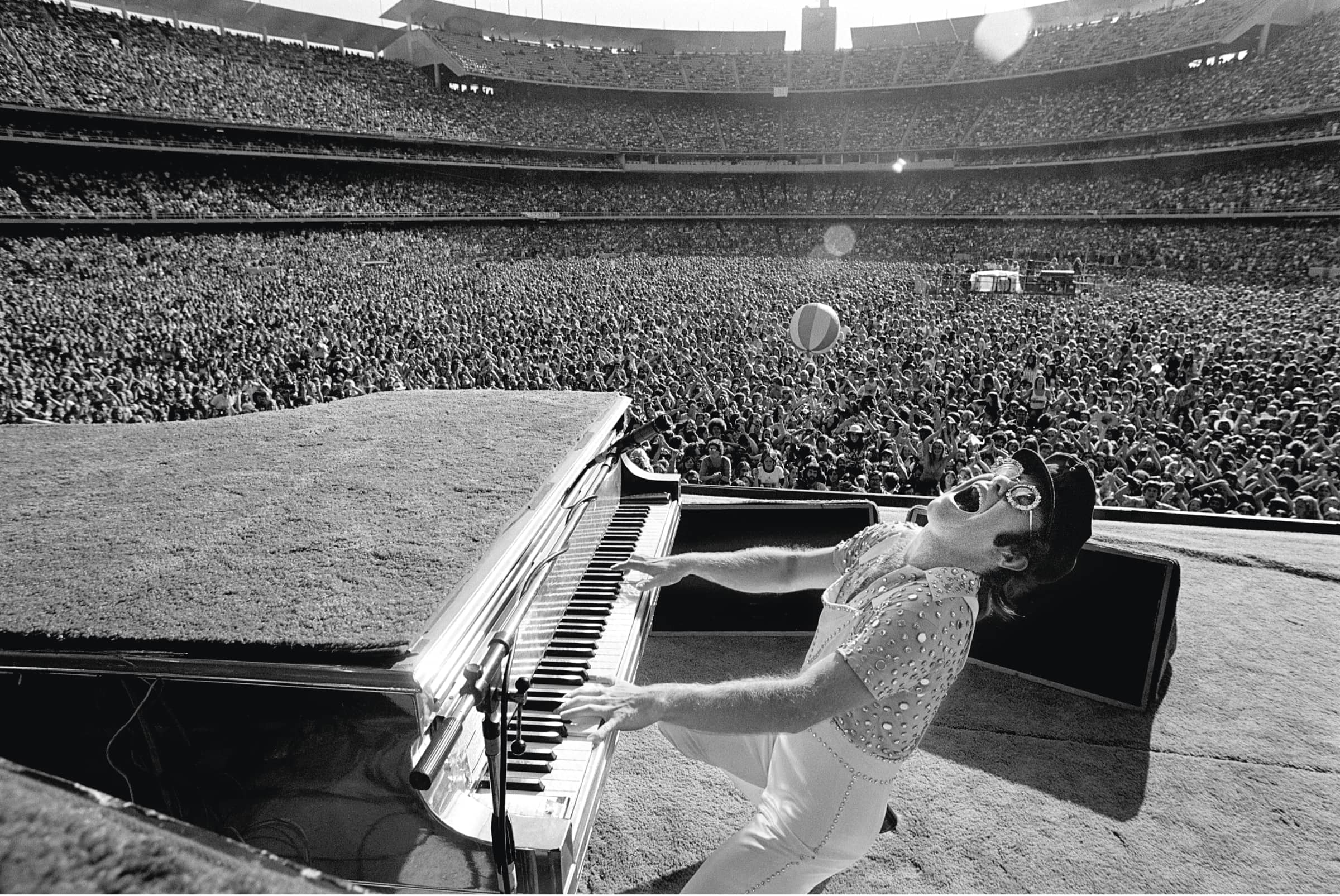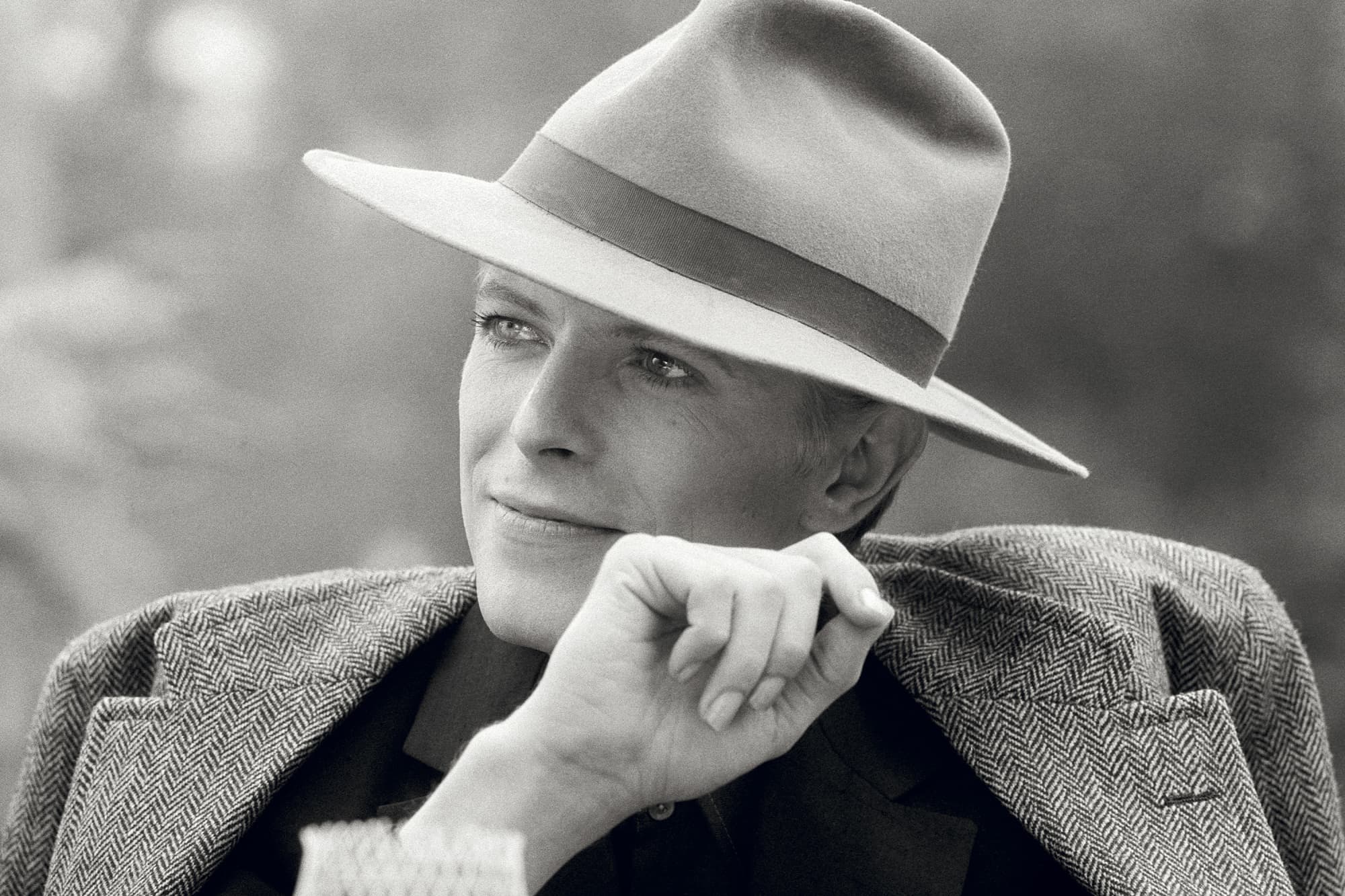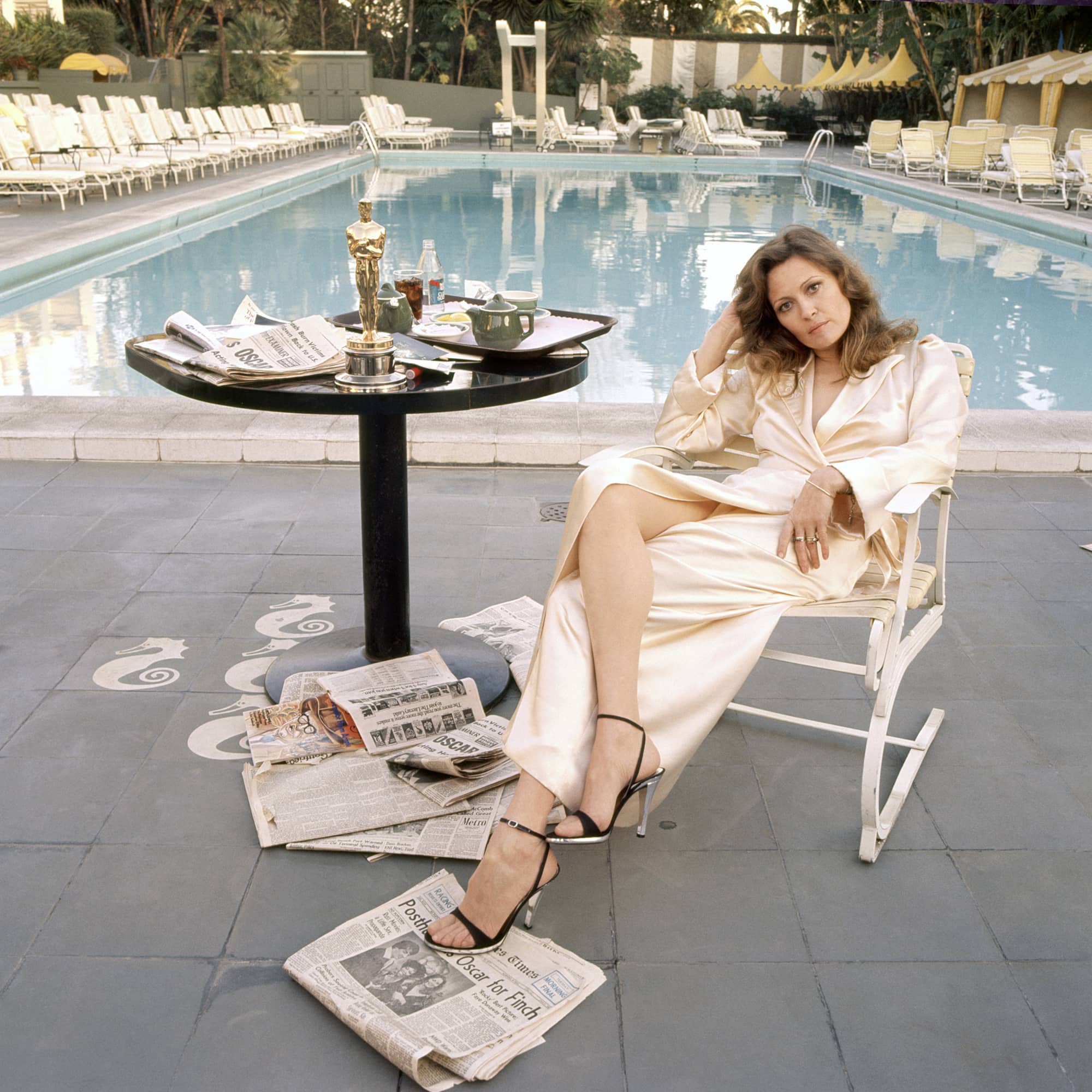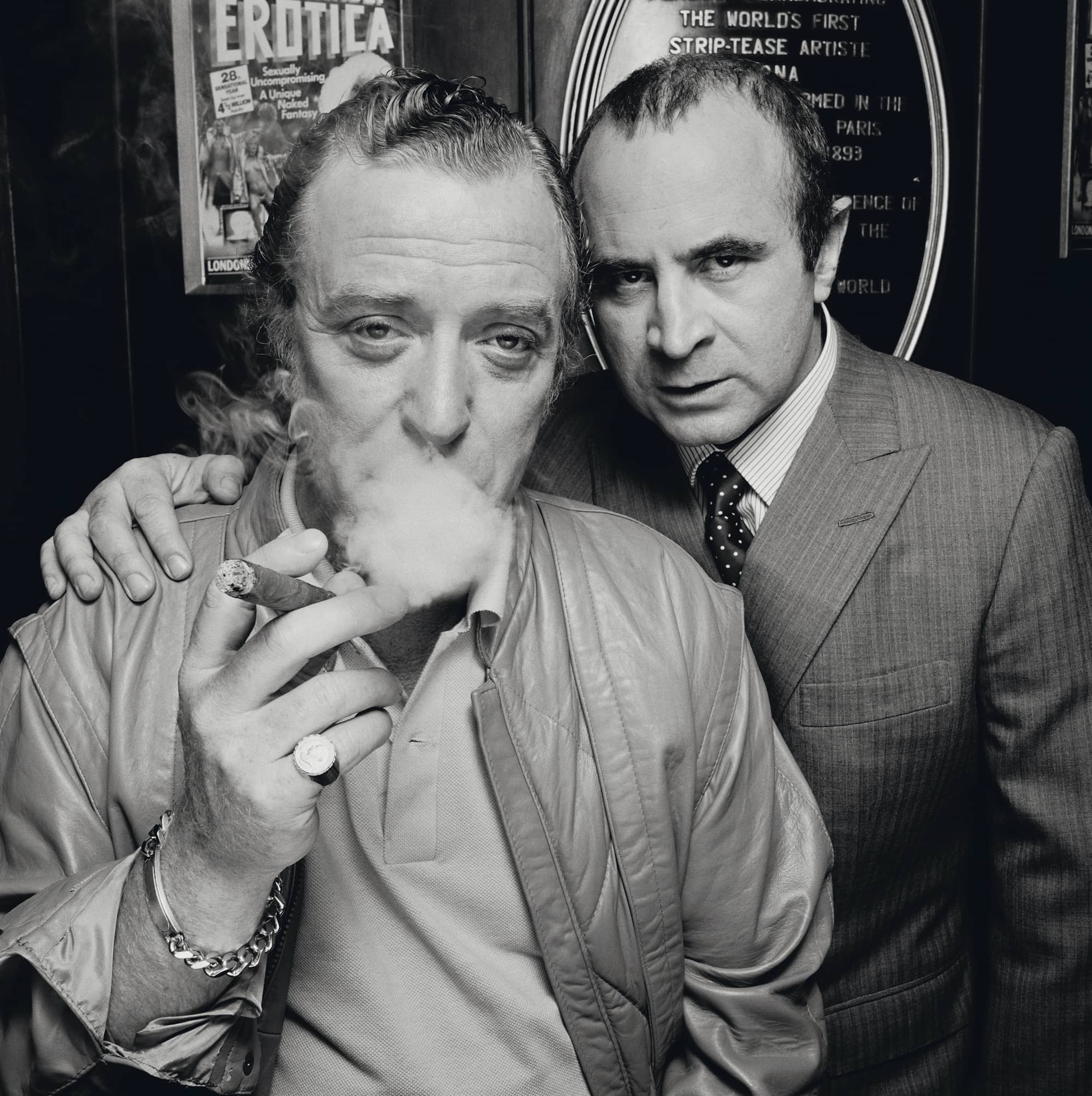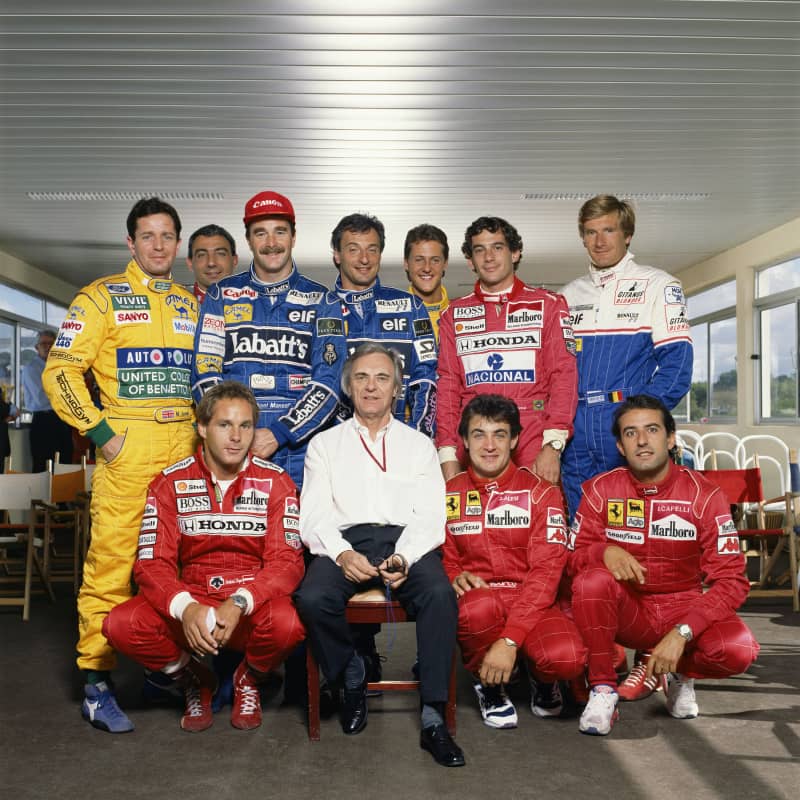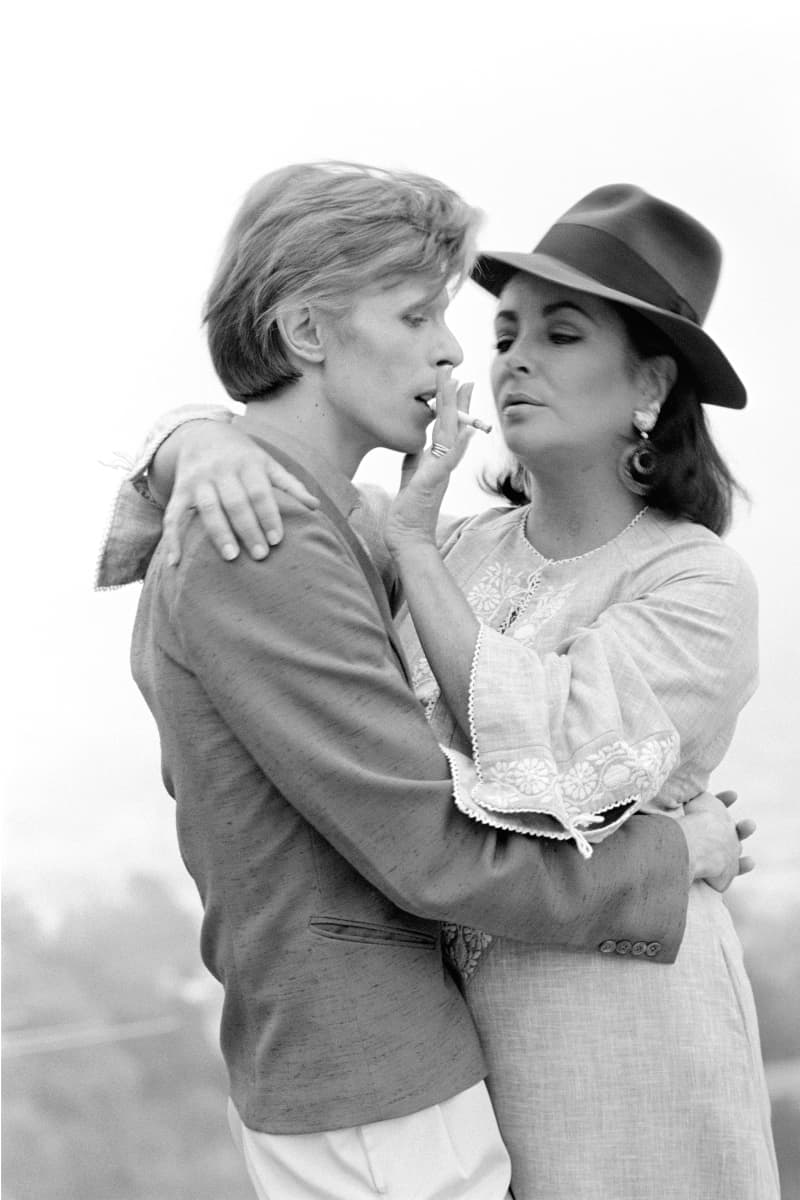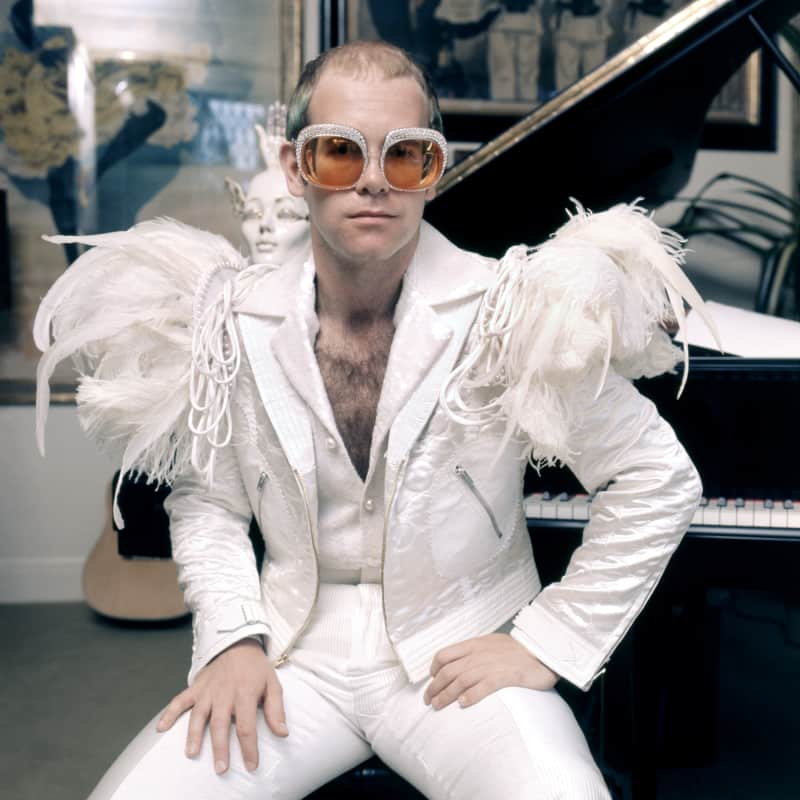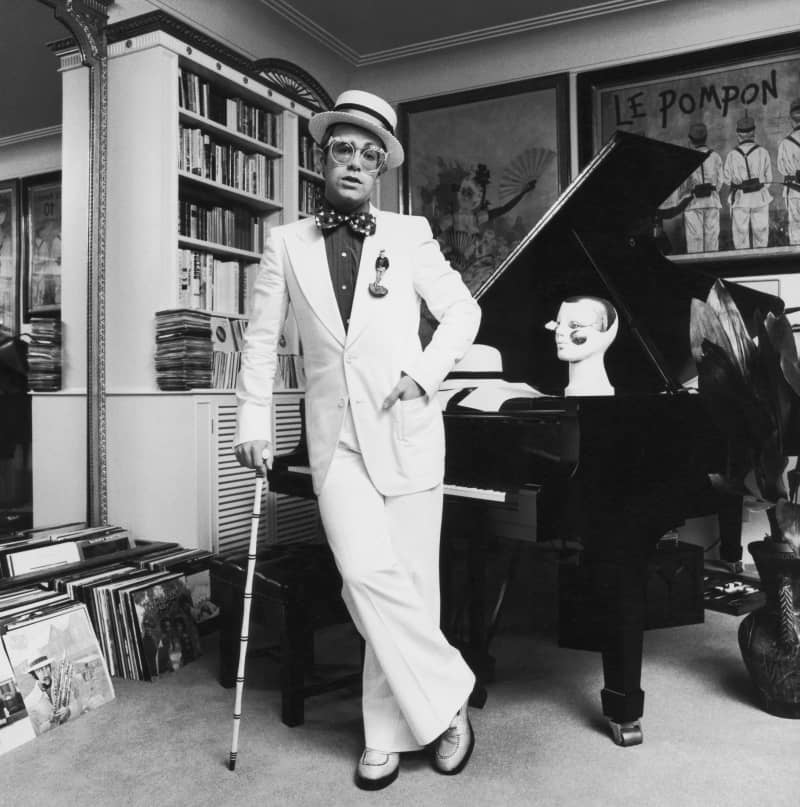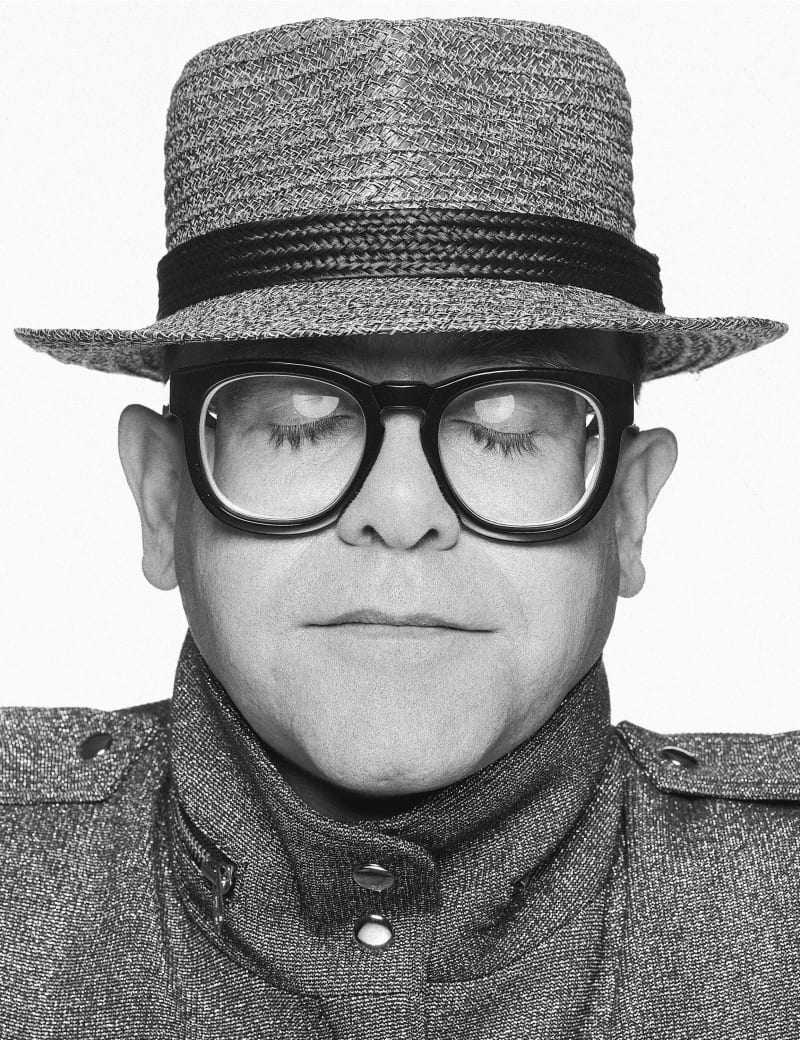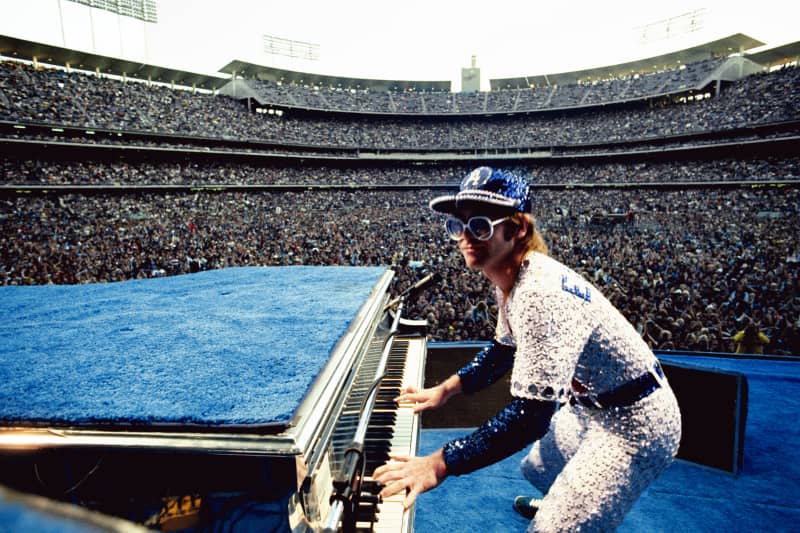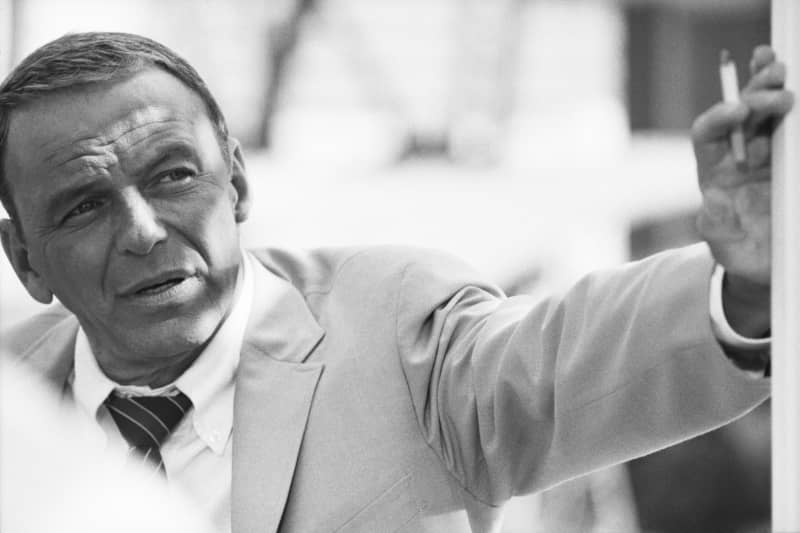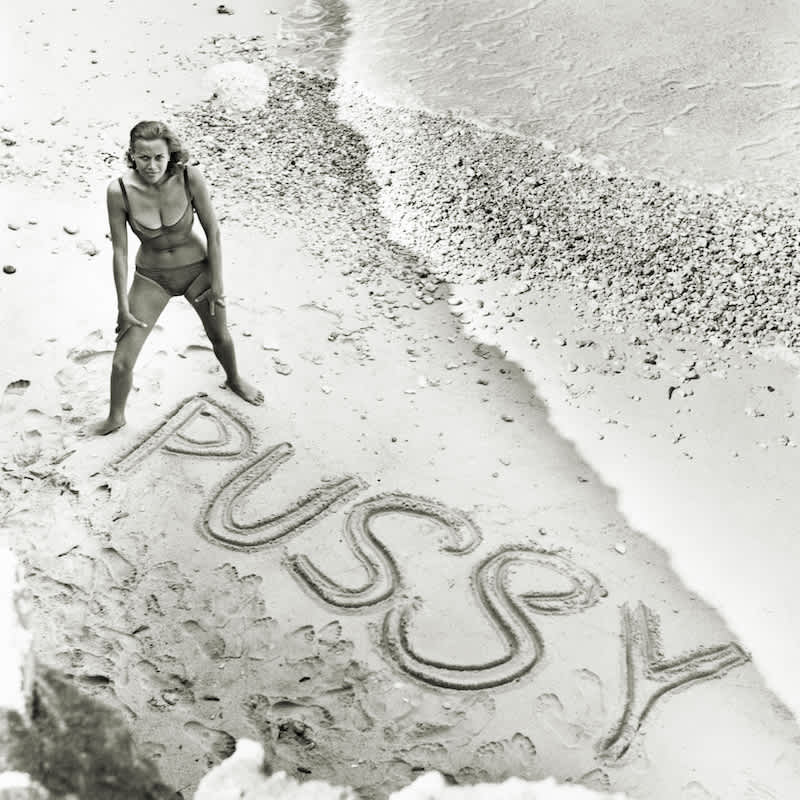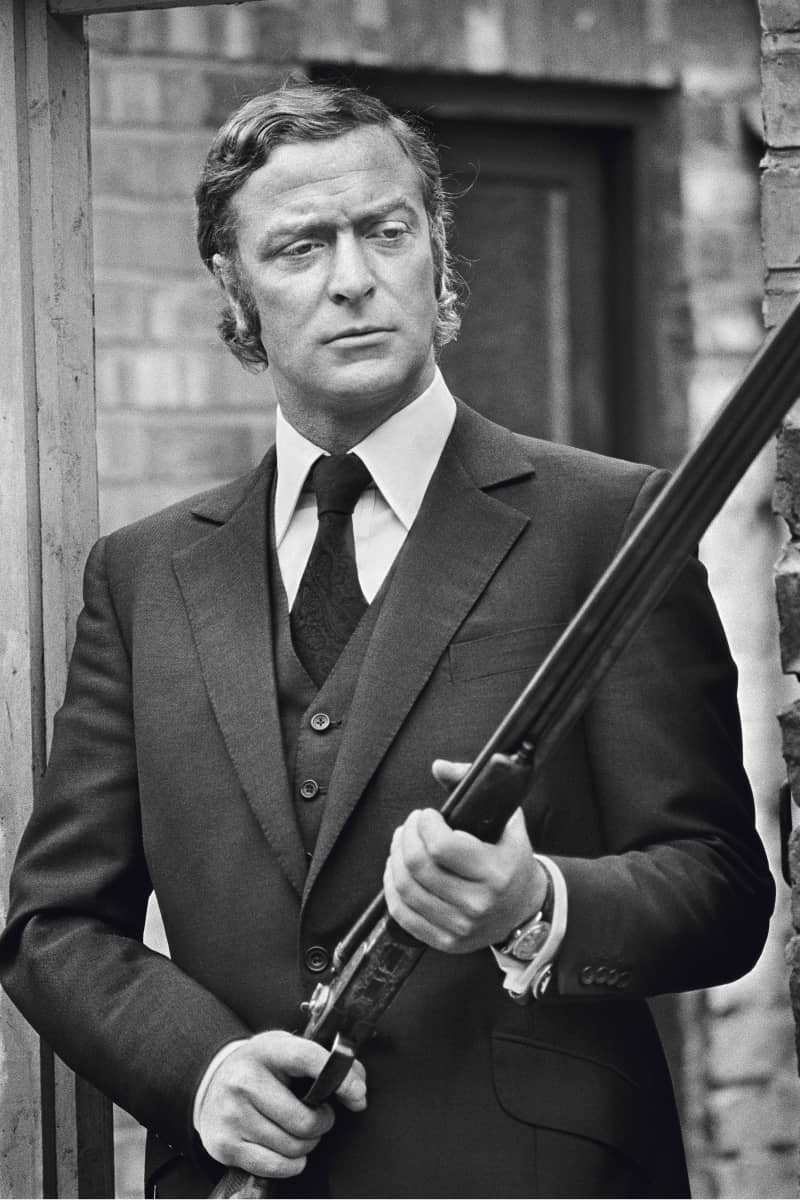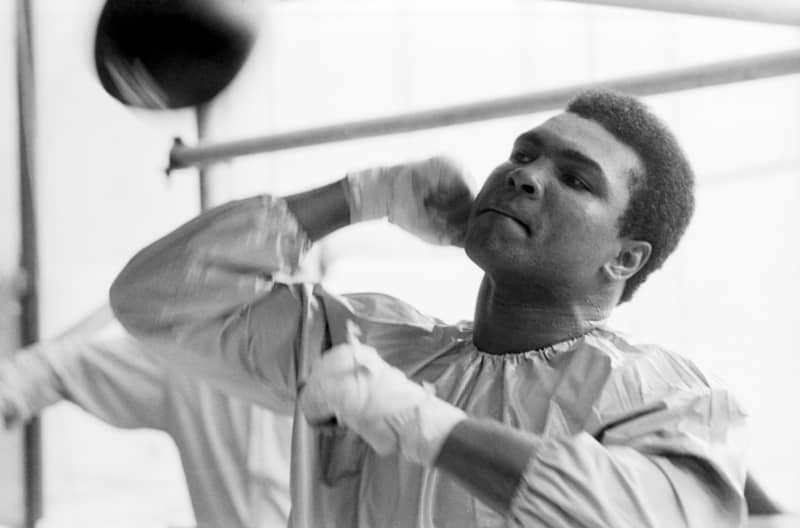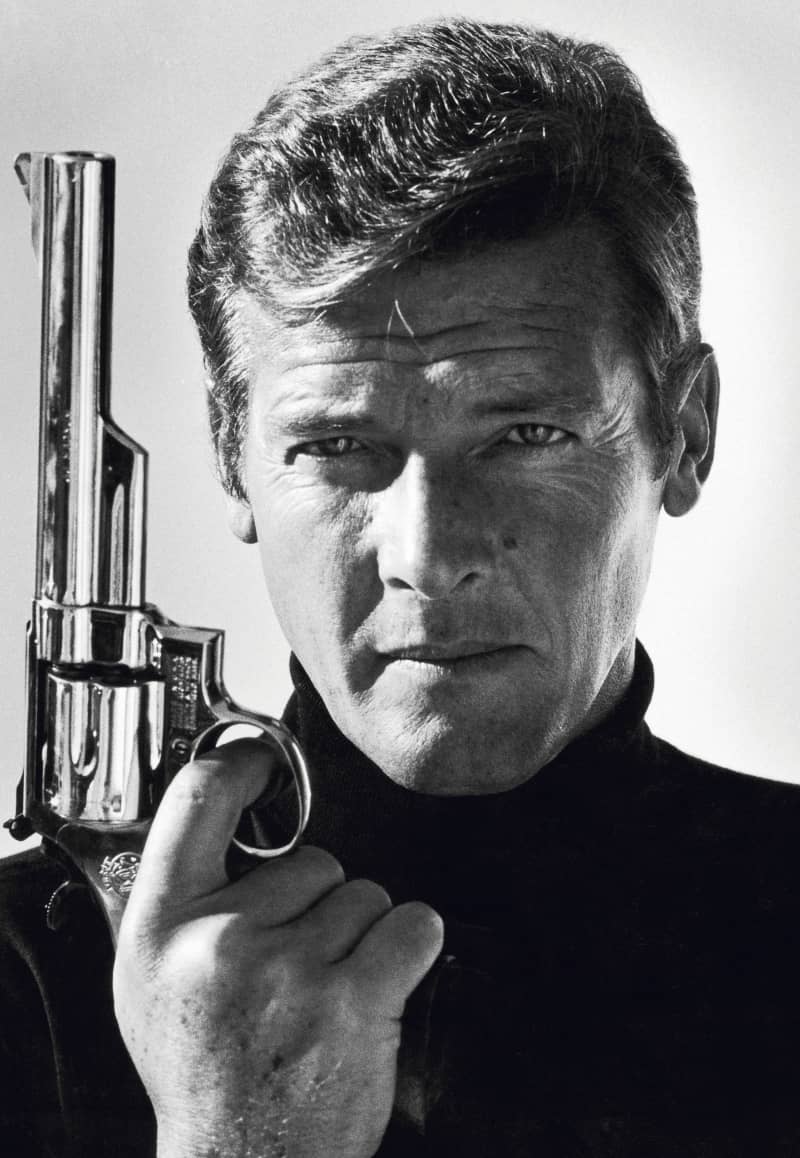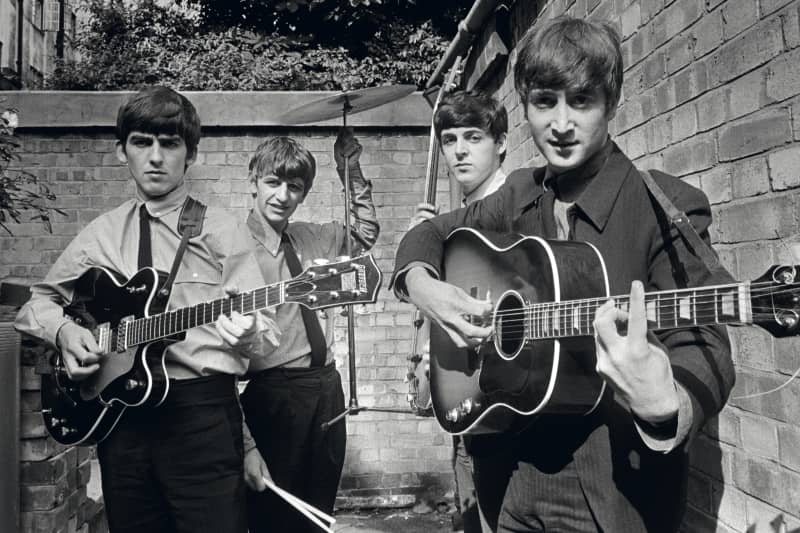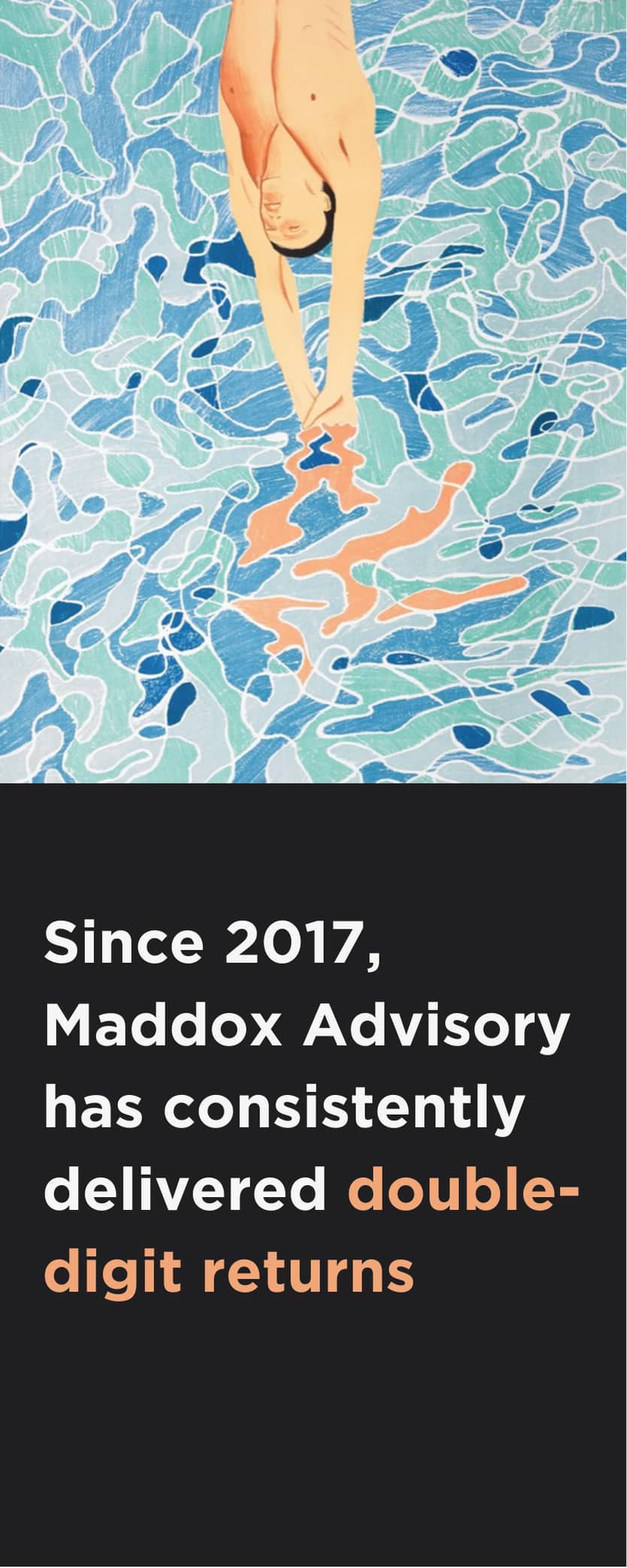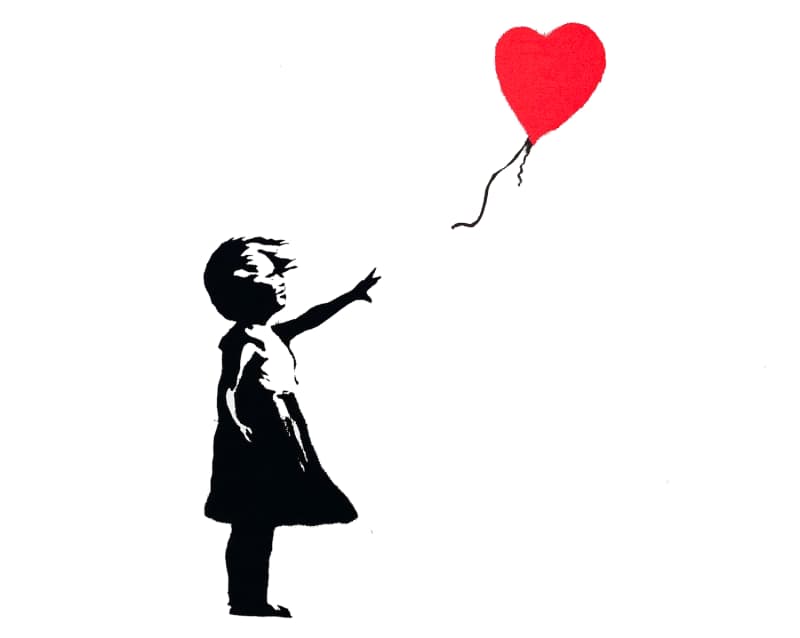An Interview With Dylan Jones
In the lead up to the upcoming Terry O'Neill restrospective at Maddox Gallery Gstaad, 'Every Picture Tells A Story', Maddox Gallery's Artistic Director Maeve Doyle interviewed Dylan Jones to discuss his friendship with the legendary photographer.
Jones is editor of British GQ, the country's premier men's title, and the chair of London Fashion Week Men's. He has won the BSME Editor of the Year Award seven times, including five awards for his work at GQ, and has written several critically acclaimed books. He was awarded an OBE in 2011 for his services to publishing.
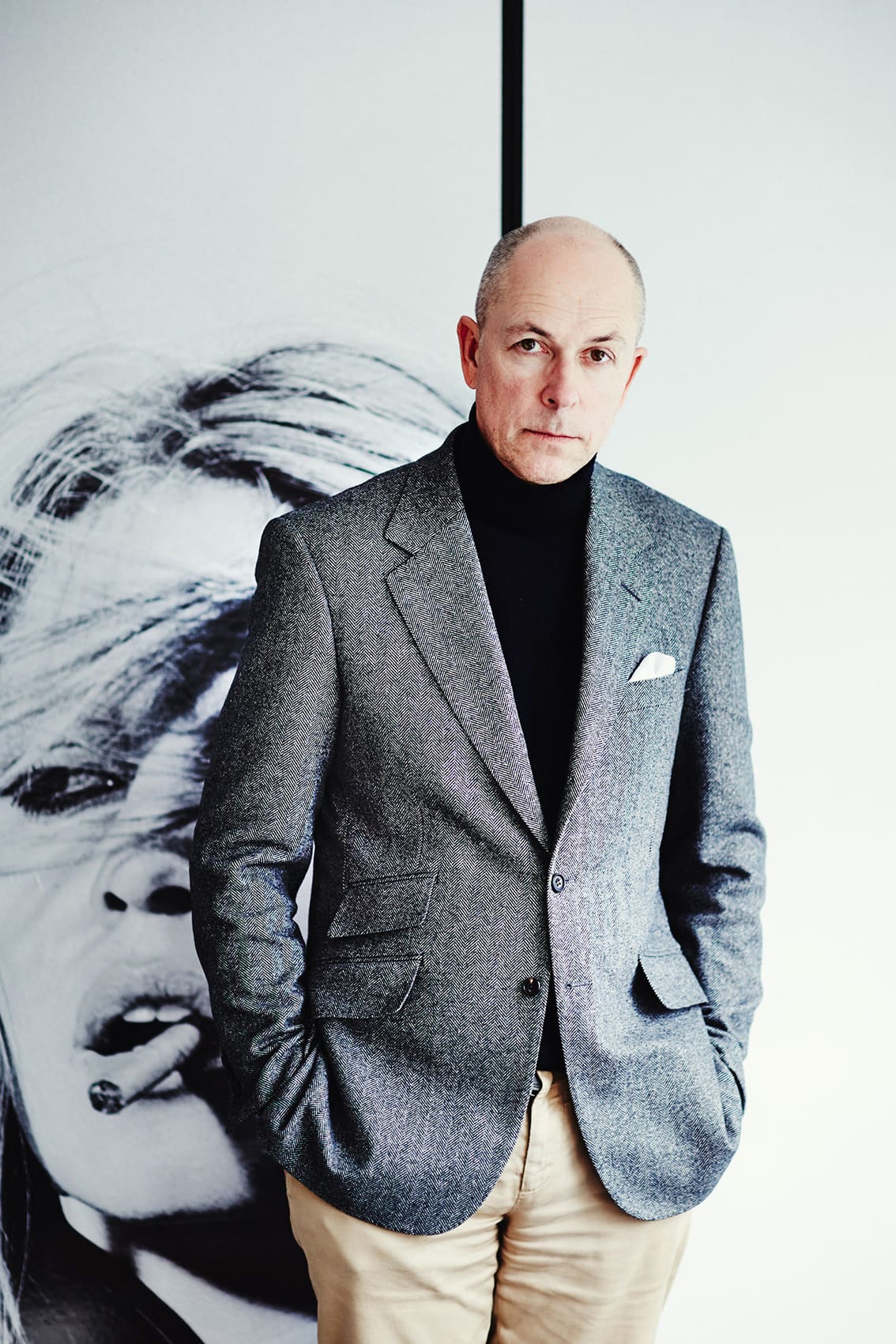
Maeve: Let's start at the beginning and enrolling into art school. What was it about going to art school that prepared you for this life that no one could have imagined?
Dylan: When I went to art school, I went to Chelsea School of Art in 1977, and all I really knew is that I wanted a life in the creative arts. I think lots of people in their teenage years or indeed when they start pursuing further education or higher education, they have a very strong idea of what they want to end up doing, and actually I didn't, I had very short-term ambitions, rather stupidly actually.
All I really wanted to do was go to art school, because I was sort of obsessed with the idea of the creative spirit and was enthralled to people like Andy Warhol and David Bowie, and I wanted to go somewhere where I could express myself. I suppose, just like lots of people do. I mean these days everyone goes to college and it's an excepted part of growing up, whereas 40 years ago if you were applying to be or if you were interested in going to art school, there were only a few places available and not many people wanted to pursue it. It felt special in a way.
I know you've written biographies about Jim Morrison, Paul Smith, David Cameron, David Bowie, and Terry O'Neill amongst others. What was it about Terry that distinguished him and his pictures? Clearly it wasn't Terry's ego that was driving him forward.
I think that if you speak [to] and if you know a lot of people who first became famous in the 60s, they all say a very similar thing. Whether they are a photographer, or a musician, or an artist or an actor, they all thought that it was fleeting. When they became famous or notable, or when they first started having success, they all thought it'd be over in five minutes, so they made the most of it. And even though lots of people look back and sort of fetishise that time, it's become an incredibly important part of Britain's cultural history.
I think lots of people that were involved in it at the time were just making hay, because they didn't think it was going to last forever. Terry was certainly like that and getting to know Terry, which I did about 25 years ago, I got to know him very well. I think Terry's USP as a person was that he didn't take himself too seriously, he may have done when he was younger I didn't know him when he was younger, but I somehow doubt it. Because on the one hand, I think he realised how incredibly lucky he had been, and on the other, I think he genuinely treated what he did as a craft.
I've known lots of photographers and I've known lots of photographers from that period and some of them can be quite precious. They look back upon those days, those happy accidents of being in the room with people who were at their formative stages of their career or were having a very important effect on the culture. But Terry was always quite blasé about it and in 1998 I spent the summer with Terry doing his archive for the Sunday Times Magazine. It took months, and literally I would turn up at his studio in his office, in South Audley Street, and we'd have a coffee and we'd chat. Then we'd start trawling through his boxes and it was absolutely chaotic. He had cardboard boxes, old tins, things shoved into cupboards, all of this extraordinary material. I was doing it because I was doing a series in the Sunday Times, and we kept finding more pictures. So, in the end I think this series lasted about two months.
There were film stars of every persuasion, there were musical people, sportsmen, politicians, all of this stuff. And I think it stems from the fact that when he started, he was basically someone that the tabloids sent along to London Airport - I don't even think it was called Heathrow then - to take photos of famous people when they arrived in the country on aeroplanes. It's a pretty entry level job really because then, there wasn't really paparazzi in this country, but his job was to turn up and so when Yule Bruner came into the country or Brigitte Bardot or someone, he would take their picture. Then he started taking pictures on set.
There are lots of people that are quite disparaging about Terry because he had access, he was in rooms with Clint Eastwood, Paul Newman, Lee Marvin, and all these extraordinary people, and he just took pictures of them. But you can say that about lots of things and lots of people who were lucky enough and smart enough to be in the same room as other people. You look back upon those pictures now and they are real testaments to their time, it's an extraordinary archive.
There's something about Terry's character that wants to elevate the human spirit, there doesn't seem to be a mean bone in his body.
I'd say that was true and there are some photographers who you work with that you know you are going to get something extraordinary out of, but difficult to work with. Terry was never difficult to work with and I maintain this, and it's probably one of the reasons why he had such a long career. You can either be brilliant and successful and difficult. You can be average and successful, but the thing is if you're a difficult person and a light shines off you and you're no longer interesting and successful, people won't work with you because the only reason they were working with you is because you delivered.
If you're not cool anymore, you're not delivering the work, who wants to work with difficult people? Terry was never difficult. I saw him lose his temper, but only on practical things and if you know yourself he wasn't a narcissist, and his ego didn't demonstrate it in a way that it does with a lot of photographers, which I think was why people didn't particularly take him seriously for a period of his life. I think his archive now is as good as anybody from that period.
How would you distinguish his pictures - would you recognise a Terry O'Neill just by the hand and the lighting?
Some of them. I think that he did a lot of pictures for the Sunday Times in the 80s and 90s and 00s, and I'm not a great fan of that work because it was mainly studio based. It was colour, it was slightly too formal. I much prefer the stuff he did on movie sets; I much prefer the stuff he did when he was out of his comfort zone; things that weren't so tightly controlled. Having said that, he took what is certainly one of the most important photographs about Hollywood that has ever been done. I know it's a cliché and lots of people have prints of it or postcards of it.
Oh, the build-up is killing me, I know where you're going with this one. "And the Academy Award goes to"…
... "And the Academy Award goes to Faye Dunaway". Even though that picture is staged, even though the component parts are very careful controlled, it says more about Hollywood than most photographs ever taken. I've got one above me at the moment, a beautiful print that I got from Terry years ago. It is a very important picture, it's very clever.
If Terry had never taken another good picture, he would be remembered for having taken that extraordinary photograph.
Faye Dunaway, Beverly Hills Hotel, 1977
The personal and the professional; the Beverly Hills Hotel; the peach satin robe; the look of the after the Oscars; the story is just endless in that picture. I love it as well, I agree with you it's beautiful.
It's perfect and I know there are lots of versions of it. As I say I know that it was sort of slightly set up, but it's all true. That photograph is as good as anything that Slim Aarons ever did.
Terry was part of a group called the 'Mayfair Orphans' with Michael Caine, Roger Moore, Dougie Hayward, Micky Most, and the owner of Tramp, Johnny Gold. Have you heard about the Mayfair Orphans?
I used to have lunch with the Mayfair Orphans all the time, because when we were doing the archive 25 years ago Terry would always want lunch. He's like me in that respect, I like eating lunch at lunchtime, I don't like eating at funny times of the day. I want to eat lunch, when I want to eat lunch, and Terry was exactly the same. I love that. If I was faffing around with something or if I was going to be late, he would say "I'm going now" and he would get his coat on and he would go to the Berkley Square café or we'd go to Scott's, possibly somewhere else.
We'd go along and sit in Dougie Haywards store and we'd have a chat there with Dougie and maybe Michael Caine would come in or Roger Moore or Johnny Gold and we'd have a bite to eat. I would always save as little as possible because I wanted to suck up this extraordinary atmosphere of these amazing men who'd lead amazing lives. Terry was very funny you know. He was a funny person. He was entertaining, he was good company, he was a nice person to be with.
Bob Hoskins and Michael Caine, London, 1985
Did you ever go to Tramp with them?
No. I never particularly liked Tramp, and also, it's not really my generation as they were slightly; considerably older than me actually. That wasn't my thing, but I loved Johnny Gold, he was someone else who was very entertaining, and they had a glint in their eye too. They'd been up to lots of naughtiness, but they were just really, really entertaining.
Terry was telling me the first time he ever took Viagra. We were having lunch and he said "Dylan I want to tell you what I did last night." - his arms were pushing in front of him, like he was patting a sofa or something. He'd been out to dinner with his girlfriend. I think this is right. I can't remember who he was with, and even if I could I wouldn't tell you. There were four of them and they were going out for dinner and someone had just sent him some Viagra from the States, when you couldn't get it over here. They were having dinner and about to go home - finish the meal, pay, and go home. Having been sent this Viagra, they took the Viagra, him and his pal, and then just as they're leaving, one of their girlfriends says I think we should go to Tramp. Terry looks at his pal and thinks this is going to be strange, because obviously Viagra doesn't increase your libido, or makes you interested in sex more, it's like scaffolding. So, he said he ended up going to Tramp, with him and his pal walking around sort of cross legged, unable to stand up because they were in a particular condition. I would have found it very, very funny.
Terry could tell that story without offending anyone. How wonderful.
Yeah, I never saw him be rude to anybody even when he was being frustrated or someone was not allowing him to do something. He'd do the sensible thing and say, "ok, fine", and then he'd find another way to do it or do something else completely. Nice man.
He was a really nice man and a great photographer with an interesting life story - a London story. I've got a sense from Lenny Taylor, the cab driver that drove Terry around, that he treated people equally, everyone was the same, everyone was treated well.
It's true and it wasn't done in a lovey way, he wasn't being patronising, it was true. He had a very nice manner about him. Also, he was quick. I remember another photographer that was slightly more difficult than Terry. I remember we were shooting a celebrity once; I think it was GQ, and I saw him afterwards at something and I asked "how was it?" and he looked a bit weary, and he said "quick". Because what a lot of people forget is that when you are a famous person, when you are talent, and when you are in a situation, and that situation could be short or long you always want to go for the shorter option - it's work.
Actually whenever you were being photographed by Terry, and I was photographed by him a couple of times, he was quick. He wanted to make it fun, he wanted you to have a good time and he wanted it to be over because it was work, it was a craft. He didn't consider it to be art.
That's such an important distinction.
It is. I've got a picture, another picture that Terry gave me. It's one of the classic pictures that he took of David Bowie when they were doing the sessions, which would then turn up as the basis for the Guy Peellaert illustration on Diamond Dogs.
I remember when we found this print, looking through all his stuff in South Audley Street. It was a beautiful print and I picked it up and I went, "Oh my goodness, that's amazing". I wasn't saying it in a way to make Terry give me this print I was literally in awe because I'm a massive Bowie fan and I'd never seen this particular frame before. He said "Do you like David Bowie?", and then he signed it and gave it to me. It was such a nice thing to do. My point is that he didn't number it, it wasn't part of an edition. I mean some people say he was too 'laissez-faire' and didn't control his work enough, possibly that's true.
Robin Moore did a very good job towards the end of his life of professionalising his business, but it was sort of nice that Terry didn't do that because I as say he didn't treat it as art. He was a smudger, it was just work to him.
David Bowie in 'Diamond Dogs', 1974
It was life that mattered to him and his relationships with people and this issue of controlling, turning it into money, archiving it, that was a business persons realm, and I got that sense from Terry, and I've not met him. I think there was a romanticism about Terry O'Neill.
Yeah, I think you're right. He was more interested in having fun. Not that he didn't take his work seriously, but it was part of that very corny but very important phrase 'the rich tapestry of life'. It was a component. Talking to Terry and being with Terry, it was very infectious and it was fun because it made me realise that the industry we work in is full of appalling self-important people, and Terry was not one of those.
Terry O'Neill - Every Picture Tells A Story on show at Maddox Gallery Gstaad from July 30th - August 29th
